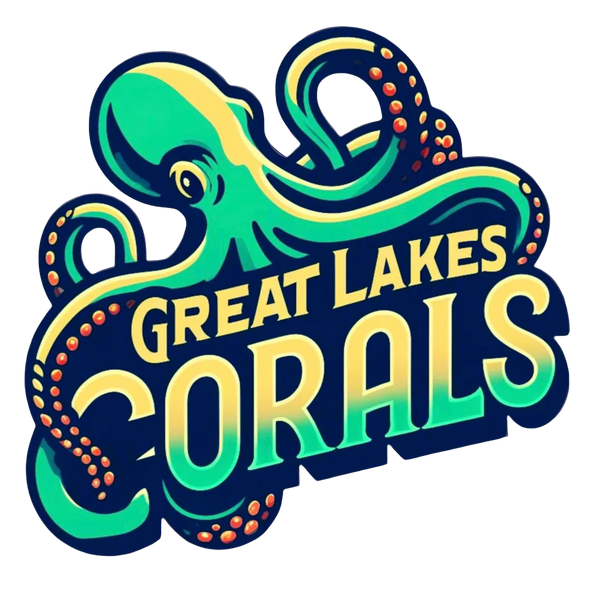Reef Dosing 101
Reef Dosing 101: When to Start, Why It Matters, and How to Do It Right
Dosing can feel complicated, but understanding it deeply unlocks healthier, faster-growing corals and a more vibrant reef. Whether you have a small mixed reef or a large-scale SPS system, precise dosing is essential for stability and coral health.
What Is Dosing?
Dosing replenishes essential elements consumed by corals and other organisms in your tank. The main three elements:
- Calcium (Ca): Essential for coral skeletal growth
- Alkalinity (KH/dKH): Stabilizes pH, supports coral skeleton development
- Magnesium (Mg): Maintains proper balance between calcium and alkalinity
Additionally, dosing nutrients (nitrate & phosphate) and trace elements (iodine, iron, manganese, etc.) can significantly enhance coral health and color.
When Should You Start Dosing?
You typically won't need to dose in a newly set-up tank. Indicators it's time to dose include:
- Introduction of stony corals (LPS/SPS)
- Test results show consistent declines in calcium or alkalinity
- Rapid coral growth surpasses what water changes can replenish
General guideline:
Begin dosing if alkalinity drops more than 1 dKH per week or calcium decreases by more than 20 ppm.
Importance of Dosing
Stability is critical. Frequent swings stress corals, causing bleaching or recession. Regular dosing prevents these swings, promoting robust growth, better coloration, and healthier corals.
Detailed Dosing Methods
1. Manual Dosing
- Ideal for: Beginners, nano or small reef tanks
- Method: Measure and manually add solutions based on daily/weekly tests
- Advantages: Low initial cost, educational
- Challenges: Inconsistent, easily overlooked
2. Automated Dosing Pumps
- Ideal for: Medium to large aquariums, high stability
- Method: Scheduled pumps add precise, small increments
- Advantages: Stable, accurate, minimal daily maintenance
- Challenges: Initial cost, requires calibration and occasional maintenance
3. Balling Method
- Ideal for: Coral-dense tanks, SPS enthusiasts
- Method: Three-part (Ca, KH, Mg with trace elements), dosed separately
- Advantages: Comprehensive, balanced, expandable
- Challenges: Multiple containers and precise management needed
4. Kalkwasser (Calcium Hydroxide)
- Ideal for: Moderate coral demand, pH management
- Critical Advice: Avoid using your ATO to dose kalkwasser due to inconsistent evaporation rates and overdose risk
- Best Practice: Use a dedicated dosing pump or kalk stirrer for controlled, stable dosing
- Advantages: Boosts pH, combined Ca & KH dosing
- Challenges: Limited effectiveness in high-demand systems, risk of overdosing
5. Calcium Reactor (CaRx)
- Ideal for: High-demand, mature reef or coral farming setups
- Method: CO₂ injection dissolves calcium-rich media
- Advantages: Automated, very stable, balanced dosing
- Challenges: High initial setup cost, potential pH reduction
Nutrient Dosing: Nitrate & Phosphate
Purpose: Correct ultra-low nutrient issues impacting coral growth and color.
Optimal Levels:
- Nitrate: 5–20 ppm
- Phosphate: 0.02–0.10 ppm
Recommended Options:
- Brightwell NeoNitro (liquid nitrate)
- Brightwell NeoPhos (liquid phosphate)
- DIY solutions: Potassium Nitrate, Sodium Nitrate, Monosodium or Potassium Phosphate
Nutrient Dosing Tips:
- Gradually adjust dosing and monitor daily at first
- Maintain nitrate-phosphate balance for optimal results
- Use coral coloration and growth as key indicators
Trace Element Dosing
Ideal for: Advanced reefers, tanks with established corals
Trace elements significantly impact coral color, health, and metabolic functions, yet must be precisely managed.
The Importance of ICP Testing
Home testing for trace elements is limited. ICP tests provide accurate measurements, preventing overdoses or imbalances.
ICP testing reveals:
- Trace deficiencies
- Harmful accumulation
- Issues with additives or salt mixes
Frequency of ICP Tests:
- Every 3–6 months once your system is stable
- Monthly initially when adjusting dosing
Recommended Trace Dosing Methods:
-
Pre-mixed Trace Element Blends:
- Brightwell Replenish
- Tropic Marin K+/A-
- Fauna Marin Color Elements
-
Advanced Individual Trace Element Dosing:
- Iodine, iron, manganese, fluoride, etc.
- Requires precise measurement and ICP guidance
Trace Dosing Best Practices:
- Always dose based on ICP results
- Use automated dosing pumps for consistency
- Maintain detailed records
How to Accurately Calculate and Begin Dosing
Step-by-Step Guide:
-
Baseline Testing:
- Record calcium, alkalinity, magnesium
-
Consumption Check:
- Wait 24–48 hours without dosing, then retest
- Determine daily element consumption
-
Using Dosing Calculators:
- Enter tank size and parameter changes
- Calculators recommend daily dosing volumes
-
Implementing Dosing:
- Start conservatively, increase gradually
- Dose elements at different intervals to avoid chemical interactions
-
Consistent Monitoring:
- Test parameters regularly
- Adjust dosing based on growth and consumption
Troubleshooting Common Issues:
-
Parameters Still Low After Dosing:
- Slightly increase daily dose and re-check after 24 hours
- Confirm accuracy of test kits, recalibrate dosing pumps
-
Parameters Too High After Dosing:
- Pause dosing briefly and allow natural consumption
- Reduce dosing amounts and frequency once levels normalize
Pro Tips for Success:
- Apply the same careful approach for nutrients and trace elements
- Always test before making dosing adjustments
- Keep detailed records of testing, dosing, and coral responses
Dosing correctly transforms your reef tank into a thriving ecosystem with rapid coral growth, vibrant colors, and long-term stability. With the right approach, dosing becomes intuitive, effective, and highly rewarding.
